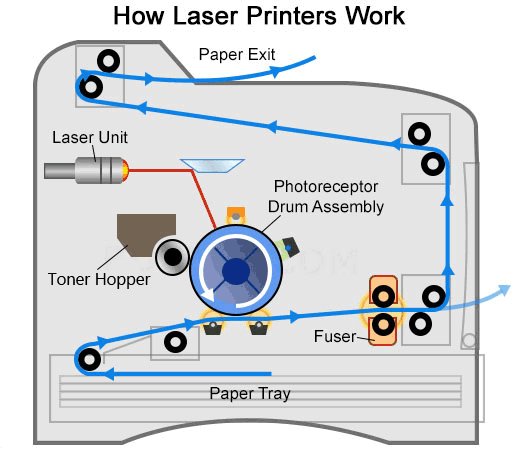LASER PRINTERS
Let’s get the obvious question out of the way. Do laser printers actually use lasers?
 Yes, they do. However, they are much, much smaller than the lasers you may recognize in science fiction movies.
Yes, they do. However, they are much, much smaller than the lasers you may recognize in science fiction movies.
A laser printer doesn’t look that different to an inkjet printer, but it puts ink on the page in a completely different way. Instead of heat and ink, a laser printer uses static electricity to transfer a dry ink powder called toner.
Sound familiar? It should, because laser printers are a lot like photocopiers and use the same basic technology. In fact, the first laser printers were actually built from modified photocopiers. In a photocopier, bright light is reflected off of a piece of paper and onto a light-sensitive drum. Static electricity causes the ink particles stick to the drum and the ink is then transferred to the blank paper by hot rollers.
Laser printers work in almost exactly the same way. However, because there is no original page to copy, the laser has to “create” the text or image, not just duplicate it. A laser printer’s job is to convert electronic data back into words and pictures. In effect, it has to turn electricity into ink.
When you tell your computer to print something, it sends a stream of electronic data to your laser printer. The print driver – which is effectively the “brains” of the printer – deciphers the data and determines what it needs to look like on the page. Using a small, focused laser beam, it scans back and forth across a drum inside the printer, building up a pattern of static electricity. The areas of static electricity attract a powdered ink called toner to the drum. Finally, as in a photocopier, the fuser unit bonds the toner to the paper.
Return to the Tech Trends Newsletter

